Seed starting mix can be expensive to buy, so I came up with my own homemade recipe. This is the best medium to use, and it’s also very easy to make.
In this post, I’ll tell you all you need to know about seed starting soil. Including choosing which type to use, and what properties to look for.
I will also show you exactly how to make your own DIY seed starter soil mix from scratch with only a couple of ingredients, and give you tips for properly storing the leftovers.
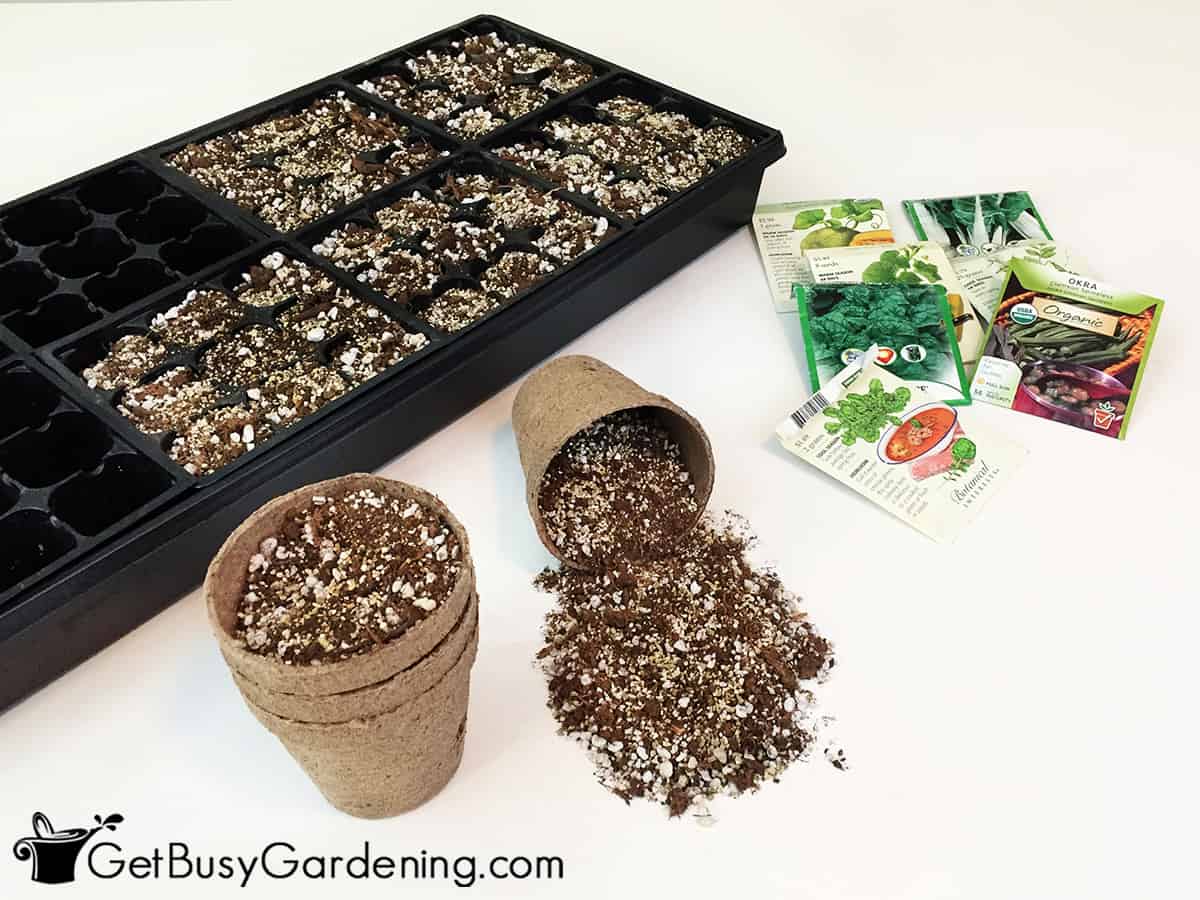
The Best Seed Starting Mix
The best seed starting medium is a soilless mix that’s fast draining, lightweight, aerated, and also holds moisture. You should always either buy a quality brand or make your own using my recipe below.
Trust me, the type of soil you use really does matter – and it can be the difference between seed starting success or epic failure! So read the package to find something with the following properties:
- Well-draining – If the soil holds too much moisture, or becomes overly wet or soggy, it can cause the seeds to rot, prevent germination, or suffocate delicate roots.
- Light & airy – Seed starting mix should be lightweight and fluffy, so that plenty of air can reach the developing roots. Heavy soils tend to become compact in containers, which will inhibit germination.
- Porous mix – A porous medium is loose and aerated. This allows water to drain through it quickly without retaining too much, and also prevents compaction.
- Moisture retentive – It’s extremely important that the soil stays evenly moist for both germination and healthy seedling growth. The mix should retain water to prevent it from drying out too quickly.
- Alkaline – The soil should be alkaline for starting most type of seeds, ideally between 5-8 on a pH probe gauge.
Related Post: Seed Starting Peat Pellets Vs. Soil: Which Should You Use And Why?
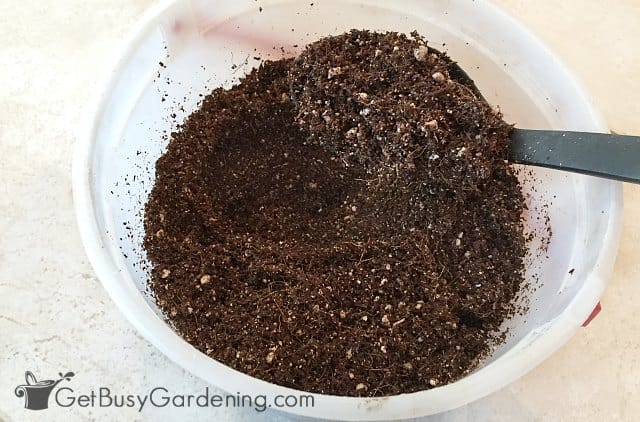
How To Make Seed Starting Mix
While there are many different options for commercial seed starting soil on the market these days, it’s usually cheaper to make your own.
Plus it’s quick and easy, and you have full control of what goes into it, so you can ensure it contains quality ingredients. Here’s my recipe:
DIY Seed Starting Mix Recipe
- 8 parts coco coir or peat moss (pre-moistened)
- 1 part vermiculite
- 1 part perlite or pumice
- 1 tablespoon garden lime per gallon (if you use peat moss)
I like to use a 1-cup measure as my “part” because it makes the perfect amount to fill up a commercial seed starting tray. You can use anything you want though, as long as it’s the same thing for each “part”.
Related Post: How To Clean & Disinfect Your Seed Starting Trays
Ingredients
- Coco coir or peat moss – These are interchangeable, so you could use either one as your base ingredient. They both work equally well to improve water retention, aeration, and drainage.
- Vermiculite – This naturally occurring mineral helps the seed starting mix retain moisture, while also preventing it from staying too wet.
- Perlite or pumice – You can use either one of these, they both add drainage to the medium, to keep it from holding too much water or becoming compacted.
- Garden lime – Peat moss is slightly acidic, so you should add lime to neutralize it. You don’t need to use this with coco coir.
Related Post: How To Make Newspaper Seed Starting Pots

Tips For Mixing Your Homemade Seed Starting Soil
Once you gather your ingredients, making your own seed starting mix is very easy. You could whip up a large batch ahead of time, or just a small one when you need it.
Simply dump all of the ingredients into a bowl or potting tray. Then use a hand trowel to stir them together until they’re well blended. You can use it right away or store it for later.
Related Post: How To Grow Seeds: The Ultimate Guide
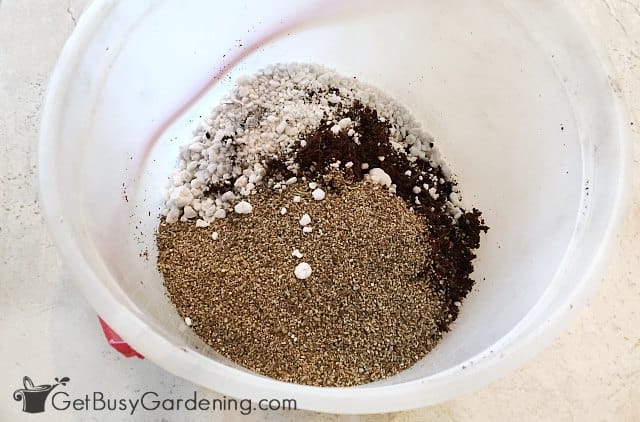
Storing Your Leftover DIY Seed Starter Mix
Whether you make your own soil for seed starting, or choose to buy a commercial brand, it’s important to properly store the leftovers to prevent bugs and contamination.
I like to put mine in a plastic bucket with an airtight lid, which works great to keep pathogens out. Store the container in a cool, dry location until you’re ready to use it.
Making your own DIY seed starting mix is easy and economical. Use it right away, or save it for later. You can even use my homemade recipe for repotting your seedlings.
Looking for even more help with growing your own seeds? Then you should enroll in my Seed Starting Course. This fun, in-depth self-paced online course has everything you need to know. Register and get started today!
Otherwise, if you just need a refresher, or want a quick-start guide, my Starting Seeds Indoors eBook is for you!
More Seed Starting Tips
- Seed Starting Supplies & Equipment
- How To Figure Out When To Start Seeds Indoors
- Tips For Starting Seeds Indoors
- How To Test The Viability Of Old Seeds With An Easy Germination Test
- When To Put Seedlings Under Grow Lights & How Much Do They Need
More DIY Potting Soil Recipes
- How To Make Your Own Succulent Soil
- How To Make Your Own Gritty Potting Mix
- How To Make Potting Soil For Indoor Plants
- 7 Easy DIY Potting Soil Recipes To Mix Your Own
Share your favorite recipe for seed starting mix in the comments section below.
Printable Instructions
Seed Starting Mix Recipe & Instructions

This 3 ingredient seed starting mix recipe is easy to make, inexpensive, and the best soil for germination and seedling health. Follow these step-by-step instructions for how to make your own from scratch.
Materials
- 8 parts coco coir or peat moss (pre-moistened)
- 1 part vermiculite
- 1 part perlite or pumice
- 1 tablespoon garden lime per gallon (if you use peat moss)
Tools
- Measuring container
- Trowel or large spoon
- Mixing container
- Seed starting trays
Instructions
- Pour the coco coir or peat moss, vermiculite, perlite or pumice, and garden lime (if you use peat moss) into a bucket or bowl.
- Mix the ingredients until they are well blended.
- Once mixed together, you can fill your seedling trays and start planting right away.
- Otherwise, store it in a plastic bucket with a tight fitting lid.
Notes
- You can use anything you want for your "part", as long as you use the same measure for each ingredient.
- For example: if you use a 1 cup measure as your part, then this recipe would convert to 8 cups coir, 1 cup vermiculite, and 1 cup perlite.
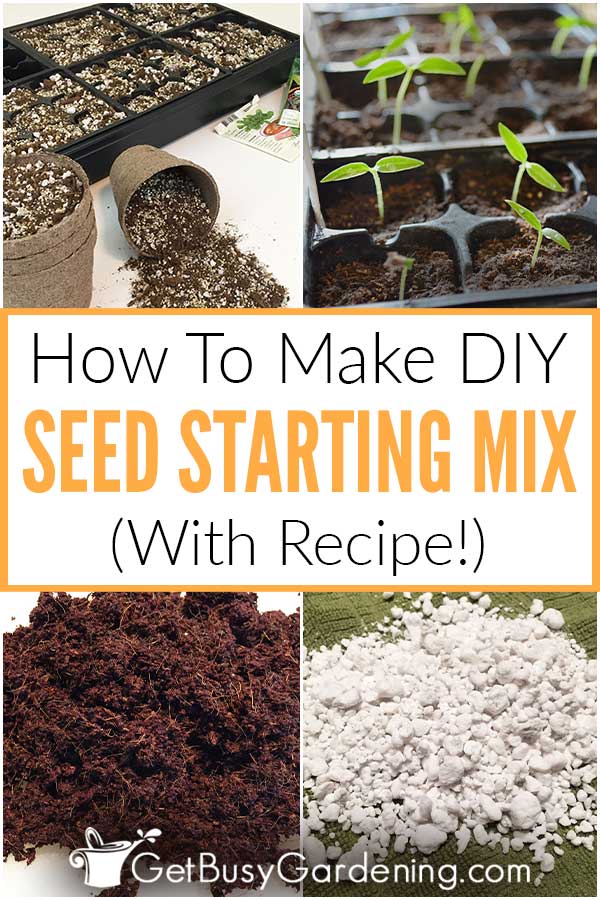
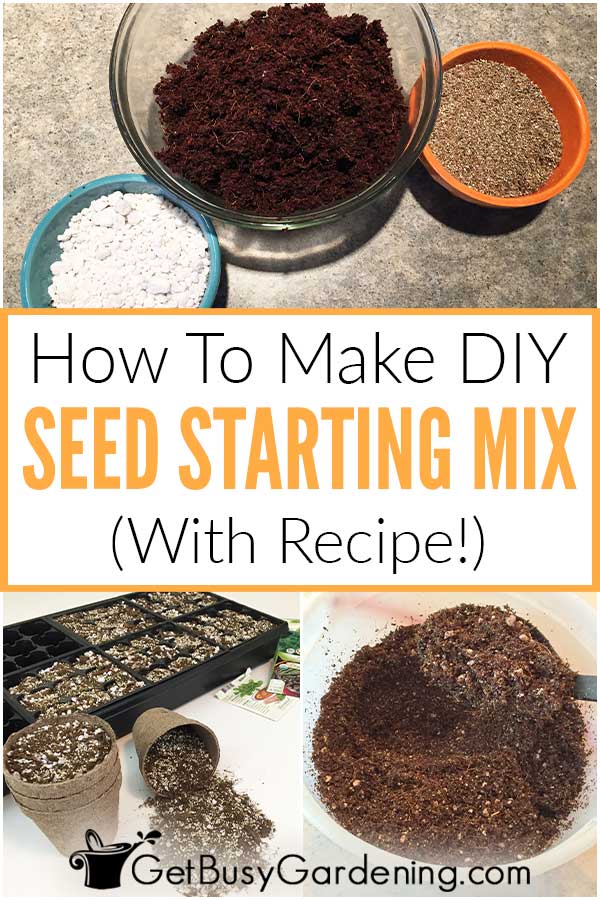
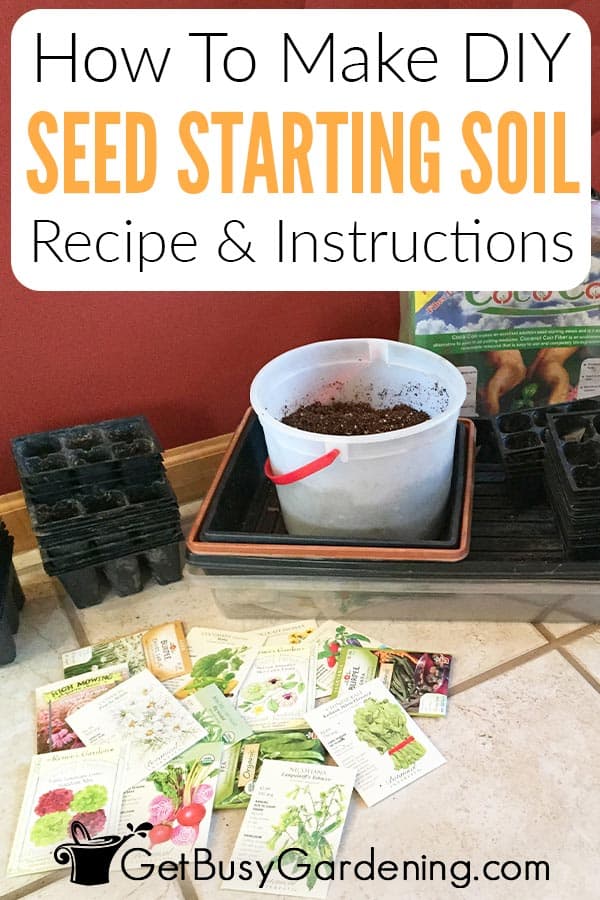
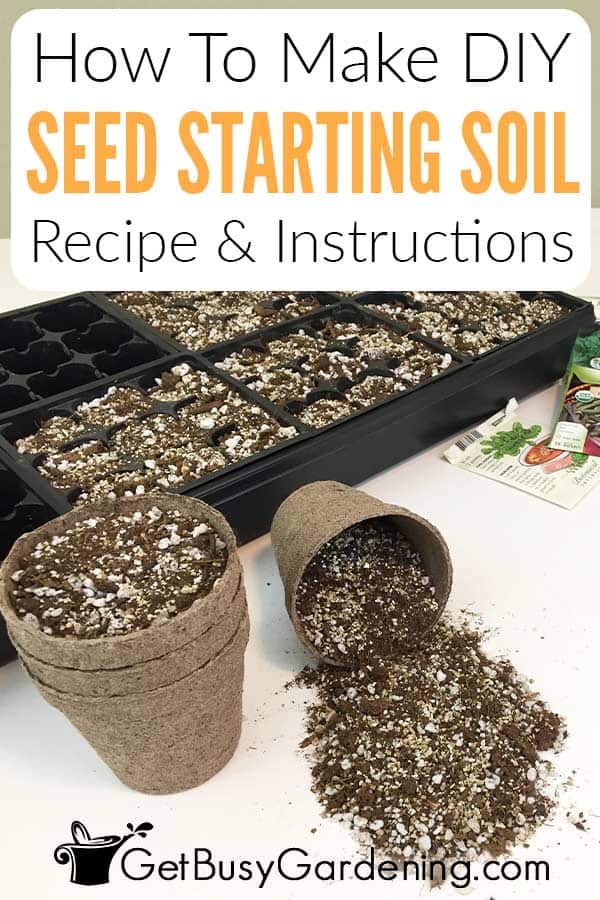
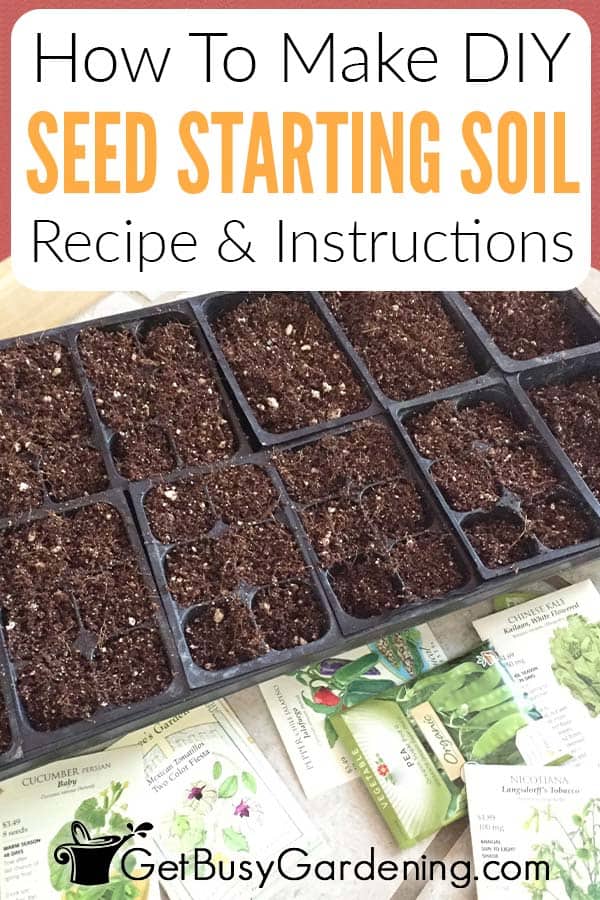
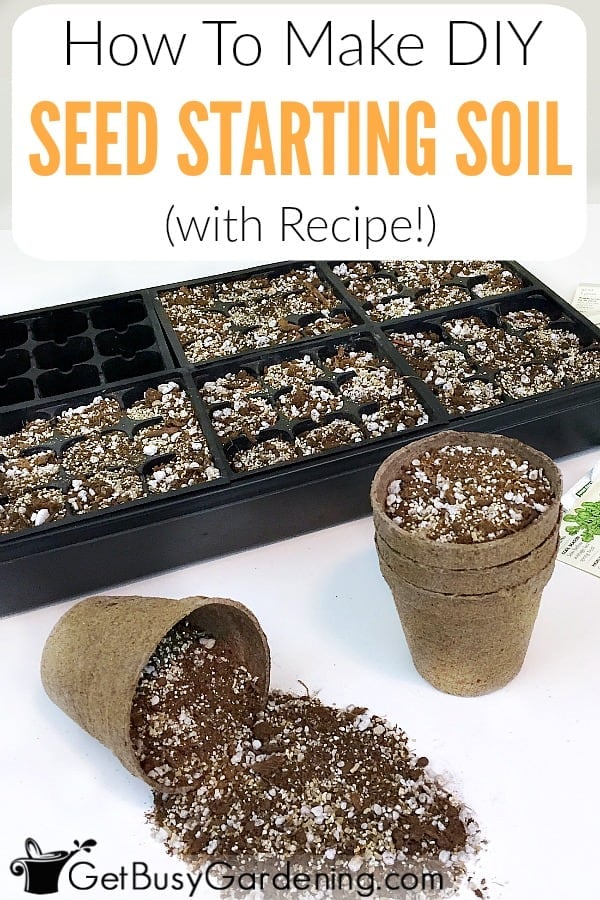

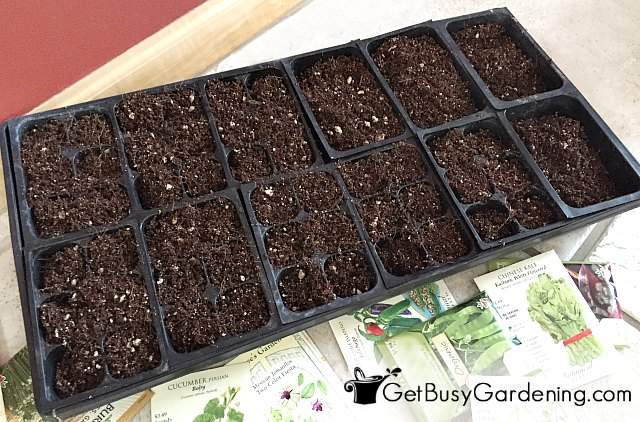
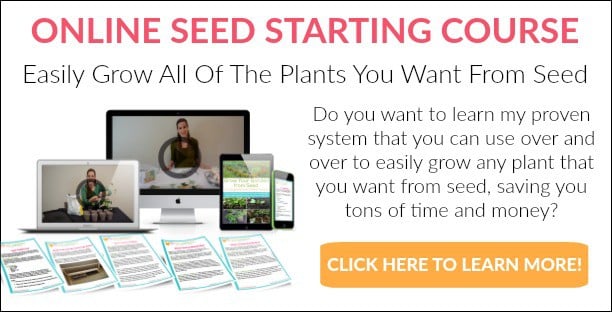

Dana Delaney says
Would this mix work with soil blocks?
Amy Andrychowicz says
I have never tried making soil blocks before, so I can’t speak on that first-hand. But from what I understand, this mix should work just fine. However, if it the blocks don’t stay together very well, then you could add some potting soil or compost to the mix make it stickier.
Marlin Yoder says
Is it OK to add a part or two of worm castings to give my onion seeds a boost with the home made planting medium?
Amy Andrychowicz says
Yes, that would be ok, as long as the worm castings are from a good source, and you’re sure they don’t contain any bugs or harmful pathogens that could damage your seedlings.
Mitch says
I’ve got some things started indoors, and this is my 1st time trying this. I’m concerned though that I have made a mistake, since when I put bell pepper, broccoli and cauliflower seedlings that had started in the small peat pellets, into pots, I mixed seeds starting mix with garden soil (Promix organic vegetable and herb mix), since I thought the plants would need some food before they get transplanted outdoors. So now I’m thinking that all my work may not work? Do you have any suggestion for how I could tell if the plants are OK or not? Or should I gently remove each plant from its pot and get it into a pot with lighter stuff?
Amy Andrychowicz says
The seedlings should be fine with some regular potting soil mixed it. Overwatering is probably the biggest concern, because it can hold more moisture. So just keep the soil moist and not wet. I don’t recommend repotting them again, or it could be too much for them. Here’s my guide on repotting seedlings for more details.
Sheila says
Coco coir usually comes in blocks/bales – would the ‘one part’ be calculate after it is moistened?
Amy Andrychowicz says
Yes, you should moisten the coir first.
Julia says
Hi Amy, thanks for sharing this recipe. I’ve used it this year and have had great success starting seeds with it. I’m considering switching to starting seeds using the soil block method and was wondering if I could use this recipe for that.
Amy Andrychowicz says
You’re welcome, so happy to hear that my seed starting mix recipe has worked for you. Yes, you can definitely use it to make your own soil blocks too. Have fun!
susan says
hi can i omit the perlite as i have none and cant find any ?
Amy Andrychowicz says
I don’t recommend omitting any of the ingredients for the succulent soil mix recipe. If you can’t find perlite, then you can use pumice instead. I have links above where you can order either of these products from Amazon, if you can’t find them in your local garden center.
John Brown-Huggins says
When I can’t find perlite locally, I substitute sited play sand (like they sell in a plastic bag at home centers).
Neil Brunton says
Great recipe and explanations for each ingredient. I have a question about moistening the peat moss before measuring: doesn’t this open the stored leftovers for the growth of spores, mold, and fungi while in the plastic bucket? And, now that i think of it, a bit of a hint about what “moist” is in this application would be helpful. Thanks. You’re a good instructor.
Amy Andrychowicz says
Thanks so much for your nice words, you made my day! 🙂 Yes, storing the moistened DIY seed starting mix certainly could put it at risk of being infected with spores. That’s why it’s important to store it in an air-tight container. If this is a concern for you, then I recommend only making as much as you need, or allowing the leftover mix to dry out before storing it. Moist means that it is light and fluffy, and no longer dry. It shouldn’t be wet to the point where it’s dripping or soaking in water.
Caroline says
Hi there. I’m curious at what point to the seedlings need additional nutrients that are not found in this mix? Do most transplant vegetable plants need to be fed during their growing period?
Amy Andrychowicz says
This seed starting mix is perfectly fine for the first stages of their life. You can start feeding them once they form the first few sets of true leaves. You can learn more about caring for seedlings here, and when and how to repot seedlings here.
Brandy says
Once this soil is used for seed starting and it is time to transplant, can this same mixture be used for transplanting the 3-5in. plant into a larger 4in. container? Or is there a different ratio to be used?
Amy Andrychowicz says
Yes, you can use this same seed starting mix, or you can mix it with regular potting soil if you’d like. I have a section in another article that talks about the best type of soil to use, if you want to take a look at that for more details… How To Repot Seedlings Into Larger Containers.
Amado Ng says
Your recipe is very helpful. I live in a zone 3 area, will the staring mix enough for the germinated seed to last for say utmost 10 weeks before plant is transferred outdoors?
Amy Andrychowicz says
Yes, the seed starting soil is usually all you need. You can even use it for potting up the seedlings if they outgrown their trays.
Berlinda says
Hi there, thanks for the recipe! Can you reuse fe seedling mix? Seems a waste to throw away after germination. Thanks!
Amy Andrychowicz says
No, absolutely do not reuse seed starting soil. Doing so could cause major problems, like damping off or bug infestations, which can even kill your future seedlings. Rather than throwing it away, you can use it to pot up your seedlings, and also put it into the hole when you transplant them into the garden.
Tommy Jacques says
I use 1 tbsp.crushed egg shells to one gal.peat moss.this works great with your recipe.
Amy Andrychowicz says
Awesome, thanks for suggestion your extra ingredient to my seed starting mix recipe! 🙂